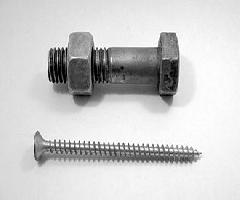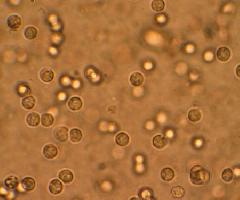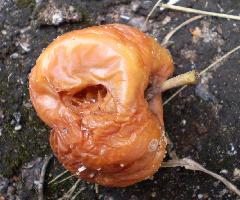There are two ways of propagating ornamental plants. These are sexual and asexual . In sexual propagation, seeds are planted until they grow into seedlings. In asexual propagation, roots, cuttings of branches, twigs, or leaves are planted and grown into new plants.
Sexual propagation of plants
Ornamental plants may be propagated by seeds. Propagation by seeds is useful in many ways. One, they are useful to those who need a large seedling population with different varieties from which they can select outstanding varieties. Two, they are useful in nurseries that need a large seedling population to be used as rootstocks for certain
outstanding varieties. They are also useful when propagating by vegetative means.Propagation by seed is easy. In fact, it is the most common method used for ornamental plants and for fruit trees. However, the use of seeds for some fruit trees are good because of variations in quality even if these seeds come one superior mother plant. This is explained by the fact that there is a wide genetic variation among plants coming from the seeds of only one plant. The following are steps to be followed in planting seeds:
1. Choose seeds that are healthy, robust, without damage, and uniform in size and shape.
2. Before seeds are planted in the plant box, they have to be soaked lightly in water. At the same time, the soil should also be moist.
3. To plant seeds in the seed box, measure the rows and distance between seeds. Based on the size of the seeds, dig the soil at least 3 to 5 inches in depth and in width. Then cover the seed lightly with soil.
Asexual method of propagation
There are two useful asexual methods of propagation. One is by artificial asexual propagation which includes cuttings, marcotting, and budding, grafting, and layering. They are the following:
1. Cutting , a cutting is any vegetative part of a plant which is capable of regenerating the missing plant parts when removed from the mother plant. Cuttings are normally identical with the mother plant. The types of cuttings include root cuttings; stem tip cutting, bud cuttings, and leaf cuttings. Of all these, the most common method is the stem tip cutting which is taken from the stem tip cutting which is taken from the branch of the plant. The stem is cut just below or above the node; all leaves and small branches are trimmed off with sharp knife. The cuttings are placed in a slanting position in a sand box so that one bud will be just at the surface 8 cm apart with rows 10 cm apart. The sandbox must be partly in the shade and the soil kept moist. When they are well rooted, they may be transferred to permanent places or nursery plots. For leaf cuttings, begonias and other similar species have the ability to develop germinal tissues from the leaves. Thus, a begonia can be propagated by cutting off the large veins on the underside of the leaves.
2. Marcotting . This is a method of plant propagation similar to cutting except that rooting occurs while the branch is still part of the mother plant. The branch is cut off only when the roots are fully develop and can
sustain the growth of the new plant. Select a parent plant that is healthy and has a good production performance. It must have other good qualities. A ring of back is removed with a sharp knife around the limb or branch of the plant and bound with moist soil. A sack or coconut husk maybe used to hold the soil in place. Several thickness of cloth can be used to prevent rapid evaporation of the moisture in the soil. Roots will form in the soil if marcotting is successful. Aside from soil, sawdust is considered a good rooting medium is as much as it is more sanitary, and plastic sheets cut in strips can be used for wrapping and tying. After cutting of the marcottage, paint the remaining stump to make it heal fast. The limb should, be set in a can filled with good soil and kept partly in the shade for 5 to 6 months before it is transferred to a permanent place.3. Grafting , this is done by joining the scion (top portion) with the rootstock in order for them to unite and grow.
4. Budding . It is the process of inserting the bud (scion) of a selected branch into the bark of a stock. The bud grows and becomes a new plant. The budding stick or scion is chosen from a bearing tree and a bud in place snugly. A cut is made to encourage the flow of nourishment to the bud, and this is finally cut off when the bud has fully developed.
5. Layering . This involves the use of the root as a propagative material by twisting it up until buds to become another plant. Layering also uses small branches or twigs, which are twisted down and covered with soil with the bud portions coming out. The new plant is cut off for transplanting when rooting is established.
Other asexual method of propagation
The other asexual method of propagation is by plants multiplying naturally in different ways. They are as follows:
1. Suckers . A sucker is a stem or shoot that comes out from the lower portion of a plant like the Bandera Espanola and Bird of Paradise.
2. Runners above the ground. This is slender branch that comes out from the base of the new plant such as the McArthur plant.
3. Rhizomes or creeping stems . These produces roots along their surface like the ginger plant.
4. Bulbs . These consist of modified leaves that are folded around each other like the lily.
5. Rootstocks . These reproduce by division. This is done by separating some of its roots like the orchid.
6. Leaves . When leaves come in contact with damp soil, the leaves germinate into tissue and become a new plant like the begonia.
note: originally posted at Exposeknowledge.com under the same author.




